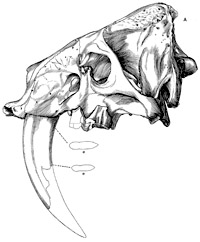Museum, University of Nebraska State

Bulletin of the University of Nebraska State Museum (1924–2023)
Date of this Version
1929
Document Type
Article
Citation
BULLETIN 16 VOLUME 1 DECEMBER, 1929
Abstract
The group of proboscideans which we have called the shovel-tuskers or Amebelodonts, was announced in June, 1927,1 following the discovery of Amebelodon fricki. In the field season of 1928, two additional species were found which are represented by mandibular tusks. One of these is a tip of a large and unique tusk, numbered 2-3-9-28, S. and L., the collectors being Bertrand Schultz and John LeMar, both of the class of 1931, the University of Nebraska. It was found within 200 to 300 yards of the spot on his farm where Mr. A. S. Keith, Freedom, Frontier County, Nebraska, found Amebelodon fricki in the spring of 1927, the formation being Late Pliocene to Early Pleistocene. Influenced by the coarse ladle-shaped mandible, we have named this new form Torynobelodon loomisi, in recognition of Dr. Fred A. Loomis, who has spent many field seasons in exploring the Tertiary series of Nebraska.
Included in
Entomology Commons, Geology Commons, Geomorphology Commons, Other Ecology and Evolutionary Biology Commons, Paleobiology Commons, Paleontology Commons, Sedimentology Commons


Comments
Copyright © Nebraska State Museum. Used by permission.